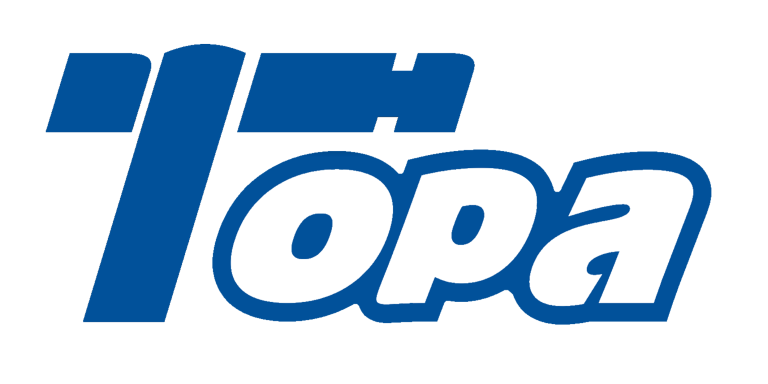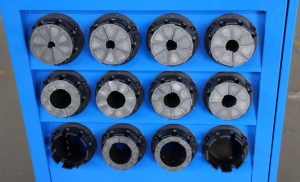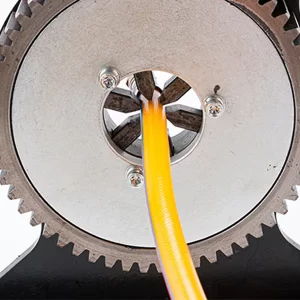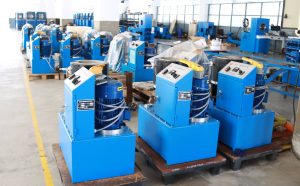When it comes to operating a hydraulic hose crimper, proper training is crucial. A hydraulic hose crimper is a piece of industrial equipment that requires precision and understanding to operate safely and efficiently. If improperly used, this tool can lead to equipment damage, safety hazards, and production delays. This article will explore the necessary training for operators to ensure they can handle a hydraulic hose crimper effectively, maintaining safety and maximizing efficiency.
1. What Basic Training Is Required to Operate a Hydraulic Hose Crimper?
Before using a hydraulic hose crimper, operators must receive training that includes understanding hydraulic systems, equipment handling, and safety procedures. But here’s the kicker—without mastering these basics, operators may not realize the full potential of the crimper or, worse, could cause accidents.
The first component of basic training is understanding the hydraulic system and the principle of hydraulic pressure. Hydraulic systems work by using fluid to transmit force, and knowing how the crimper relies on this system is crucial for successful operation. Operators must also learn how to handle the crimper, including how to load hoses, set up the crimping dies, and adjust the machine’s pressure settings.
Finally, safety training plays an essential role. Handling a hydraulic hose crimper involves interacting with high-pressure systems, which can be hazardous. Proper training ensures that operators know how to use personal protective equipment (PPE), follow emergency protocols, and identify potential safety risks. This knowledge minimizes accidents and downtime, creating a safer working environment.
Table: Basic Training Requirements for Hydraulic Hose Crimper Operation
| Training Component | Description |
|---|---|
| Hydraulic System Knowledge | Understanding of hydraulic principles and operations |
| Equipment Handling | Proper use of crimping machines and components |
| Safety Protocols | Knowledge of PPE, emergency procedures, and risk identification |
2. Why Is Proper Safety Training Critical When Using a Hydraulic Hose Crimper?
Safety is at the core of any hydraulic system operation, and hydraulic hose crimpers are no exception. But here’s the catch—many accidents occur due to improper training or oversight when it comes to safety. Without proper safety training, operators are at risk of injury, and equipment can easily be damaged.
One key component of safety training is recognizing the potential hazards of hydraulic systems. These systems work under extremely high pressure, and a malfunction or miscalculation can lead to severe accidents. Operators must be trained to understand these risks and know how to handle high-pressure hoses, fittings, and crimpers safely.
Personal protective equipment (PPE) is another critical aspect of safety training. Operators must learn to wear appropriate PPE, such as gloves, goggles, and hearing protection, to prevent injuries from flying debris, excessive noise, or pressurized fluid.
Finally, safety training should include emergency protocols. Operators need to be equipped with the knowledge of what to do in case of a system failure or a crimper malfunction. Understanding how to properly shut down the system, alert emergency responders, and administer basic first aid can make a significant difference in preventing injuries.
Table: Key Safety Training Areas for Hydraulic Hose Crimper Operators
| Safety Component | Description |
|---|---|
| Hydraulic Pressure Hazards | Understanding the risks of high-pressure systems |
| Personal Protective Equipment (PPE) | Using gloves, goggles, and hearing protection |
| Emergency Protocols | Knowing how to respond to equipment failures or accidents |
3. What Knowledge Should Operators Have About Hydraulic Hose and Fittings?
One of the most critical areas of training for hydraulic hose crimper operators is understanding hydraulic hoses and fittings. This knowledge is essential because the crimping process requires precision when selecting and matching hoses with the correct fittings. Ready for the good part? If operators don’t fully understand the different types of hoses and fittings, the crimping process could fail, leading to costly repairs and safety risks.
First, operators need to understand the various types of hydraulic hoses, including their pressure ratings, temperature limits, and material composition. Hydraulic hoses come in a variety of sizes and types, such as high-pressure, suction, or chemical-resistant hoses. Operators must be trained to recognize which type of hose is suitable for specific applications based on factors like fluid type, temperature, and pressure.
Next, operators must be familiar with hydraulic fittings. These fittings come in different shapes and sizes, such as barbed, push-on, or crimped, and are designed for various types of hoses. The wrong fitting can lead to leaks or even failure of the hydraulic system. Operators should know how to properly match fittings to hoses based on the application and pressure requirements.
Additionally, it’s essential for operators to understand hose specifications, such as bend radius, working pressure, and burst pressure. Using a hose that exceeds its maximum pressure rating could result in failure, so having a deep knowledge of hose specifications ensures safe and effective crimping.
Table: Types of Hydraulic Hoses and Fittings
| Component | Types and Examples | Application |
|---|---|---|
| Hydraulic Hoses | High-pressure, suction, chemical-resistant | Different applications based on pressure, temperature, and fluid type |
| Hydraulic Fittings | Barbed, push-on, crimped | Must match the hose to ensure a secure connection |
| Hose Specifications | Bend radius, working pressure, burst pressure | Ensures proper performance and safety |
4. What Role Does Crimping Pressure Play in Proper Operation?
Crimping pressure is a fundamental element of the crimping process, directly influencing the quality and durability of the hose connection. But here’s the kicker—too much or too little pressure can result in ineffective crimps, which could lead to leaks, hose failure, or even damage to the hydraulic system. Proper crimping pressure ensures that the fitting is tightly secured, providing a leak-proof connection that can withstand high pressures.
Operators need to understand how to adjust the crimping pressure based on the hose material and fitting type. For instance, high-pressure hoses may require more force than standard hoses, while softer hoses may require less. To ensure consistent quality, operators must be able to adjust the crimper to apply the correct pressure for each specific job.
Another key factor is knowing when to check the crimping pressure. Regularly monitoring the pressure during operation ensures that the crimper is working within the recommended range and that the crimps are being applied evenly across all hoses.
Table: Crimping Pressure and Its Impact on Hose Performance
| Crimping Pressure (Tons) | Effect on Hose Performance | Potential Issues |
|---|---|---|
| Low Pressure | Loose, unreliable crimp | Leaks, weak connections |
| Correct Pressure | Secure, tight crimp | Optimal performance |
| High Pressure | Damages hose and fitting | Hose rupture, fitting failure |
5. What Should Operators Know About Crimping Dies and Other Tools?
Crimping dies are one of the most essential components in the crimping process, and operators must know how to choose and maintain them. But what’s the real story? If the crimping die is damaged or improperly installed, it can affect the quality of the crimp and even cause safety issues.
There are various types of crimping dies, each designed for specific hose sizes and fittings. Operators must be trained to recognize which die is compatible with a given hose and fitting combination. For example, a die designed for a large hose will not fit a small hose and may result in an ineffective crimp.
In addition to understanding which die to use, operators must also know how to properly maintain the dies. Regular cleaning and inspection of dies are critical to ensure they remain in good working condition. Worn-out dies should be replaced promptly to avoid producing faulty crimps. Finally, operators must be trained to install and remove the dies safely and efficiently.
Table: Types of Crimping Dies and Their Functions
| Die Type | Hose Size Range | Application |
|---|---|---|
| Small Dies | 1/4” to 1/2” | Ideal for automotive or low-pressure applications |
| Medium Dies | 1/2” to 1” | Suitable for industrial applications |
| Large Dies | 1” and above | Used for heavy-duty industrial hoses |
6. How Do You Operate a Hydraulic Hose Crimper Safely and Efficiently?
Operating a hydraulic hose crimper safely and efficiently requires a clear understanding of the tool’s functions and controls. But here’s the kicker—many operators may overlook key settings or fail to optimize the machine for their specific tasks, which can reduce performance and safety.
The first step to operating safely is ensuring that the crimper is properly set up before each use. This includes checking the dies, ensuring the right crimping pressure is set, and confirming that the hose and fitting are correctly positioned. Before starting the operation, operators should always ensure that they are following the manufacturer’s safety guidelines and wearing the appropriate PPE.
For efficiency, operators should familiarize themselves with the crimper’s controls, such as the crimping pressure adjustment, die settings, and cycle times. Knowing when and how to adjust these settings will allow operators to complete their tasks faster while ensuring the quality of the crimps.
Finally, regular maintenance and calibration are necessary to keep the crimper working at its peak efficiency. This ensures that the crimper is always capable of producing high-quality, consistent crimps.
Table: Steps for Safe and Efficient Hydraulic Hose Crimper Operation
| Step | Action | Purpose |
|---|---|---|
| Setup | Check dies, crimping pressure, and hose fitting | Ensure proper crimping conditions |
| Safety | Wear PPE and follow safety guidelines | Prevent injuries and accidents |
| Efficiency | Adjust settings for optimal performance | Maximize crimp quality and speed |
7. How Do You Perform Routine Maintenance on a Hydraulic Hose Crimper?
Routine maintenance is essential for keeping a hydraulic hose crimper running smoothly. Neglecting maintenance can lead to malfunctions, decreased performance, and even safety hazards. Operators must be trained to perform basic maintenance tasks, including cleaning, lubrication, and inspection.
One of the most important maintenance tasks is cleaning the crimper after each use. Dirt and debris can accumulate in the machine, affecting its performance. Regularly cleaning the crimper ensures that it continues to function at its best.
Lubricating the moving parts of the crimper is another critical maintenance task. Lack of lubrication can cause friction, wear, and damage to the crimper. Operators must know how to apply the right type and amount of lubricant to ensure smooth operation.
Finally, operators should inspect the crimper for signs of wear and tear. Parts like crimping dies and seals should be checked regularly for damage, and any worn-out components should be replaced promptly.
Table: Routine Maintenance Tasks for Hydraulic Hose Crimpers
| Maintenance Task | Frequency | Purpose |
|---|---|---|
| Cleaning | After each use | Prevents debris buildup and ensures smooth operation |
| Lubrication | Monthly | Reduces friction and wear on moving parts |
| Inspection | Monthly | Identifies worn-out parts that need replacement |
8. How Do You Troubleshoot Common Issues with Hydraulic Hose Crimpers?
Hydraulic hose crimpers are complex machines, and occasionally, operators will encounter issues that require troubleshooting. Common problems include uneven crimps, malfunctioning dies, and loss of pressure. Troubleshooting these issues effectively requires a good understanding of the crimper’s components and functionality.
One common issue is uneven crimps. This may occur if the crimper is not applying the correct pressure or if the dies are not properly aligned. Operators must know how to check for alignment and adjust the pressure to ensure a uniform crimp.
Another common issue is a loss of pressure. If the crimper is not generating enough pressure, it may fail to properly attach the fitting to the hose. Operators must be able to identify potential causes of low pressure, such as air leaks or faulty seals, and take appropriate action to resolve the issue.
Finally, malfunctioning dies can also lead to poor-quality crimps. Worn-out or damaged dies should be replaced immediately to ensure the crimping process is effective.
Table: Troubleshooting Common Hydraulic Hose Crimper Issues
| Issue | Possible Cause | Solution |
|---|---|---|
| Uneven Crimps | Incorrect pressure, misaligned dies | Adjust pressure and check alignment |
| Loss of Pressure | Air leaks, faulty seals | Inspect and replace seals, check hoses |
| Malfunctioning Dies | Worn-out or damaged dies | Replace dies promptly |
Conclusion
In conclusion, proper training is vital for ensuring the safe and efficient operation of hydraulic hose crimpers. Operators must understand the basic principles of hydraulics, the importance of safety, and how to perform routine maintenance. Additionally, they must be familiar with the various tools and dies required for effective crimping, as well as troubleshooting common issues. By investing in comprehensive training, businesses can improve both the quality of their hydraulic connections and the safety of their operations.
FAQ Section
Q1: What is hydraulic hose crimping?
A hydraulic hose crimping is the process of attaching fittings to hydraulic hoses using a crimper tool, applying pressure to ensure a secure, leak-proof connection.
Q2: How does hydraulic hose crimping work?
The crimper applies hydraulic pressure to squeeze a fitting onto the hose, creating a tight, secure seal that can withstand high pressure.
Q3: Why is safety training important for hydraulic hose crimper operators?
Safety training helps operators understand the risks of working with high-pressure systems and ensures they follow procedures to protect themselves and others.
Q4: How do you perform maintenance on a hydraulic hose crimper?
Maintenance involves cleaning, lubricating, and inspecting the crimper for wear and tear. Worn-out parts should be replaced to ensure optimal performance.
Q5: How can you ensure that your crimping is accurate every time?
Accuracy can be achieved by following proper procedures, calibrating the crimper, and verifying hose and fitting sizes before crimping.





